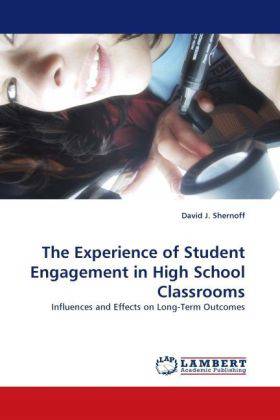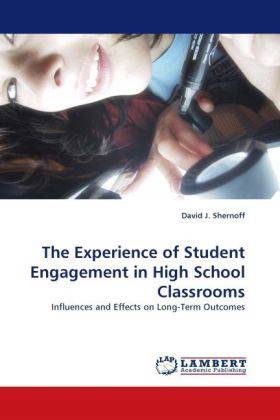
- Afhalen na 1 uur in een winkel met voorraad
- Gratis thuislevering in België vanaf € 30
- Ruim aanbod met 7 miljoen producten
- Afhalen na 1 uur in een winkel met voorraad
- Gratis thuislevering in België vanaf € 30
- Ruim aanbod met 7 miljoen producten
Zoeken
The Experience of Student Engagement in High School Classrooms
Influences and Effects on Long-Term Outcomes
David J Shernoff
Paperback | Engels
€ 77,95
+ 155 punten
Omschrijving
This study investigates the experience of student engagement in high school classrooms - both the influences on engagement as well as the short-term and long-term educational outcomes resulting from engagement. The experiences of 526 tenth and twelfth grade students enrolled in 13 U.S. high schools during the 1990s were examined. Data were gathered using the Experience Sampling Method (ESM) and student interviews. Students reported higher engagement during individual and group work than while listening to the teacher lecture, watching a video, or taking a test - and also during their non-academic classes such as art, computer science and vocational education compared to their traditional academic classes. Engagement also predicted long-term continuing motivation and college performance. Over all, results suggested that activities and classrooms that combined academic intensity with features that provoke a positive emotional response are more likely to engage students the short term and the long term.
Specificaties
Betrokkenen
- Auteur(s):
- Uitgeverij:
Inhoud
- Aantal bladzijden:
- 240
- Taal:
- Engels
Eigenschappen
- Productcode (EAN):
- 9783838322193
- Verschijningsdatum:
- 9/06/2010
- Uitvoering:
- Paperback
- Formaat:
- Trade paperback (VS)
- Afmetingen:
- 152 mm x 229 mm
- Gewicht:
- 358 g

Alleen bij Standaard Boekhandel
+ 155 punten op je klantenkaart van Standaard Boekhandel
Beoordelingen
We publiceren alleen reviews die voldoen aan de voorwaarden voor reviews. Bekijk onze voorwaarden voor reviews.











